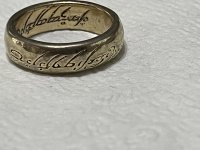KY Hiker
Bronze Member
- Oct 28, 2014
- 1,537
- 3,220
- Detector(s) used
- Whites
- Primary Interest:
- All Treasure Hunting
He had a chance to correct himself yet shifted the blame to someone else. I get that, I've witnessed that kinda of behavior in all forms of treasure hunting from all types of people. Regardless, I will credit him for all of the information he shared, I believe he had a good heart. I wish he would have found something more definitive before passing, he had a lot of time and effort into the legend.
According to him, he found several mines in KY but they were French or Spanish with no evidence of Swift. He shared with me back in the Fall a little something via PM with pictures and last said was waiting on an assay. He was being cautious but wanted to share. Rather not express any details as he told me to keep it to myself... I guess I just blew that, but he has moved on to a better place and has no concern with it now.


 who knows for sure.
who knows for sure.



